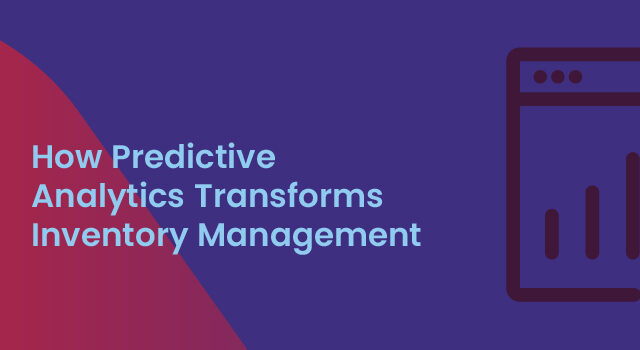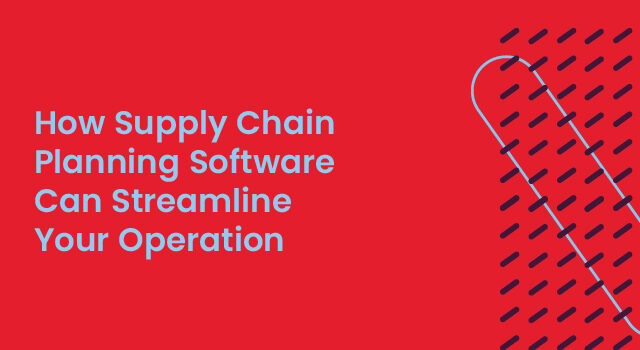Your supply chain is only as strong as its weakest link, yet your business depends heavily on its performance.Just one unreliable supplier can take your supply chain from high-performing to sub-optimal.
Regularly evaluating your suppliers helps reduce performance problems, identify improvement areas, and build strong relationships. An effective supply chain leads to improved business efficiency, customer service, sales, and profits.
According to the Netstock Inventory Management Benchmark Report, supplier reliability is a major concern for SMBs, with 72% facing unpredictable delivery times. Lead time variability is especially challenging for those sourcing from China, affecting 67% of businesses, compared to 56% for those sourcing from the US. This data highlights the importance of thoroughly evaluating supplier performance to maintain a resilient supply chain.
Let’s unpack the five steps in evaluating supplier performance.
Criteria for evaluating supplier performance
Your supplier performance criteria must support your business goals.
1. Quality of products or services
Product or service quality refers to the extent to which the product or service conforms with the set standards and specifications. Quality is more than the product’s physical attributes. It also applies to the reliability, consistency, and fitness for use. A good supplier will deliver a product that meets the buyer’s specifications and expectations.
Businesses use various metrics to determine the product quality, including:
- Defect rates: The percentage of products that don’t meet quality standards. A low defect rate shows effective supplier quality control.
- Return rates: The percentage of products returned to the supplier because of quality issues.
- Customer complaints: The number and severity of complaints by customers unhappy with the quality.
- Compliance with specification: The degree to which a supplier’s products conform to the standards and specifications set by the buyer.
- Consistency: The supplier’s ability to maintain a consistent quality level.
- Certifications: Industry-specific quality certifications like ISO 9001 show the supplier’s compliance with internationally recognized quality standards.
The supplier’s ability to deliver quality products can significantly impact profitability. Poor quality can lead to delays and increased inspection and rework costs.
Poor quality will also upset customers. Returns will increase and the brand reputation could suffer. Over time, customers may defect to your competition.
Here’s an example of how quality problems can affect profitability
In 2007, Mattel, one of the world’s biggest toy manufacturers, recalled 18 million toys because of safety issues. The problems included lead-contaminated paint and small magnets that posed a swallowing hazard.
Lead is highly toxic, and the powerful magnets, once swallowed, could cause injury. The recall was one of the biggest in history and cost the company a significant amount of money. Production and distribution were halted.
Mattel faced intense media scrutiny and censure from consumer groups, severely damaging the company’s reputation. The crisis revealed inadequate quality control of subcontractors. Mattel had to overhaul its supplier relations, increase inspections, and introduce supplier auditing. The recall cost Mattel $30 million in direct costs, and its shares dropped in value. Civil suits followed.
2. Delivery performance
Smooth operations and the fulfillment of customer expectations depend on the smooth delivery of products. Delays are costly, especially in businesses that depend on Just-in-Time (JIT) delivery systems. With such systems, any delay will stop production, and sales will suffer.
The On-Time-Delivery Rate (OTD) measures the percentage of orders delivered on time. Reliable suppliers will have a high OTD rate, calculated:
On-Time Delivery Rate = (Number of on-time deliveries/ Total deliveries) x 100
Timeliness is just one performance aspect. Consistency and flexibility are equally important. Reliable delivery schedules ensure that there are no production delays, and customer demand is met regularly.
Delivery variability can cause uncertainty, adding risk to the supply chain. Businesses that battle inconsistent deliveries need bigger buffers. Higher safety stock means higher inventories, tying up capital.
Flexible suppliers can easily adapt to changes in specification or demand. In dynamic markets, a flexible supplier is an invaluable partner, being able to react quickly to changes in demand.
Lead time, the time between order placement and delivery, is another vital supply aspect. Short, predictable lead times make it easier to plan production and inventory.
Modern demand and supply planning solutions, like Netstock, make it easier for you to manage the supply chain. These solutions help you measure and review supplier performance and improve delivery performance with real-time insights, predictive analytics, and exception reporting.
“Netstock has provided us with increased visibility and flexibility in decision-making. Our relationships with suppliers have significantly improved with clearer anticipated orders. They appreciate the transparency and reliability in our projections, allowing them to plan their production more efficiently.” – Eastern Warehouse Distributors.
Read more
3. Cost competitiveness
The lowest price is very often not the best buy. When assessing cost-effectiveness, buyers must evaluate cost vs. value. Value includes product quality, reliability, customer service, and flexibility.
Businesses must consider the Total Cost of Ownership (TCO) when evaluating cost. This method accounts for all direct and indirect costs of buying from a supplier. Costs include shipping, handling, storage, and quality control. Use the TCO to avoid hidden costs and evaluate the true cost of buying a product.
Negotiation tips
During price negotiations, you cannot compromise on quality or delivery performance. Yet, negotiation is a vital process. The market sets the price, so business profitability depends on your negotiating skills. The aim during price negotiations is to find a win-win position for both parties. These tips should help you to settle on a fair price.
- Ensure the supplier understands your needs, including an acceptable price range, quality standards, and delivery expectations.
- Use volume as a price lever. Consolidate orders or increase volume commitments to achieve lower prices.
- Look for flexibility in lead times, payment terms, or order quantities.
- Combine several products and services in a single supply agreement.
- Use industry benchmarks to gauge price competitiveness.
- Build strong, long-term relationships with suppliers. Suppliers may offer better pricing to customers with whom they share a trusting relationship.
4. Supplier reliability and risk management
Your company’s ability to meet operational goals and customer requirements depends on your supply chain reliability. Supplier performance appraisal is vital for ensuring that you meet your goals. Supplier assessments should include:
- Timely delivery
- Product Quality
- Order Accuracy
Industry certifications, like ISO 9001, show a commitment to maintaining high standards.
The importance of risk assessment
Assess risk to identify potential supply chain disruptions. In understanding the risks, you can take steps to reduce the likelihood and impact risks on the supply chain. External issues like natural disasters and political risks and internal risks like labor unrest and equipment failure could cause supply interruptions. Don’t rely too heavily on a single supply source. Dual sourcing can mitigate risks. A contingency plan will help you quickly recover from severe supply chain disruptions.
Use technology
Use demand and supply planning software, like Netstock, to review supplier performance in real-time.
- Track OTD, order accuracy, and lead time in real-time.
- Identify performance trends and improvement areas.
- Identify risks with risk alerts and scenario planning.
- Use scenario planning to make contingency plans to quickly recover from supply interruptions.
- Reduce the risk impact with automated safety stock based on demand variability and supplier reliability.
- Improve forecast accuracy with advanced forecasting algorithms and adjust orders before disruptions happen.
“We use the supplier performance functionality [in Netstock IA] to track our poor-performing suppliers so we can review and eliminate any extended lead times to avoid a build-up of backorders. We are also able to develop our supplier relationships and understand their frustrations so we can make necessary adjustments to our ordering frequency without presenting a risk to the business.” – Stonegate Tooling
Read more
5. Communication and responsiveness
Strong supplier relationships start with effective communication. Your suppliers must understand your requirements and report problems promptly so you can act quickly. Transparency ensures no misunderstandings, supports mutual goals and encourages collaboration. Open communication promotes problem-solving and builds trust between partners.
Collaborative tools can boost communication by promoting real-time communication. Platforms that provide shared dashboards and analytics promote collaboration. Shared forecasts, performance metrics, and real-time inventory data ensure that everyone stays informed.
Active supplier communication builds trust
The automotive industry is an acknowledged leader in the world of supplier collaboration. Most manufacturers operate in JIT inventory environments where lean manufacturing principles leave little room for error. Buying from hundreds of suppliers means that problems occur from time to time.
Car manufacturers promote honest and open communication with their suppliers. If there is a major problem, like equipment failure, the supply partners have daily communication sessions to work around the problem. Open communication builds trust and minimizes production downtime.
Monitoring supplier performance drives continuous improvements.
Monitoring and measuring supplier performance is crucial for managing partnerships and driving improvements. Using the right software will help build strong supplier relationships, minimize supply interruptions, and boost business efficiency.




